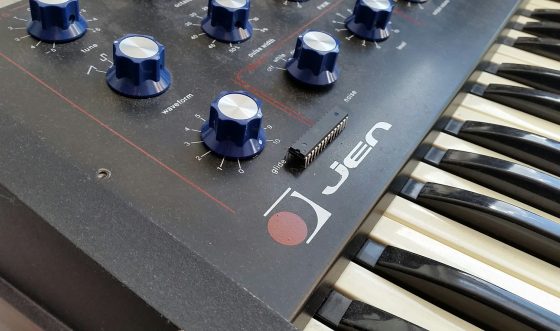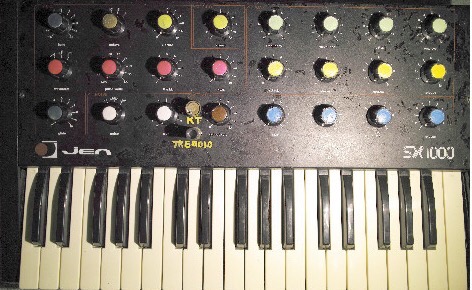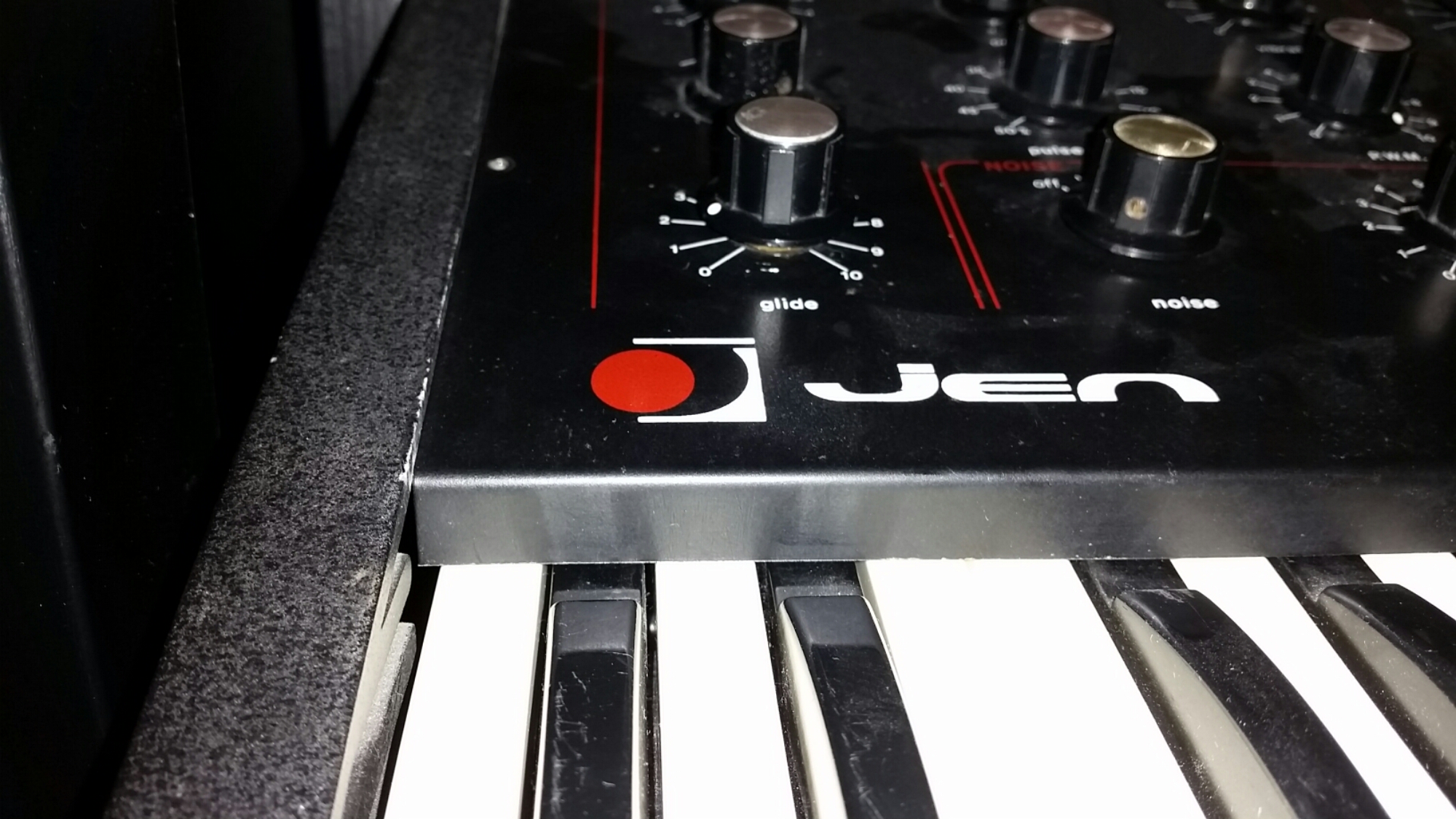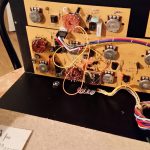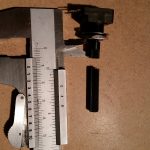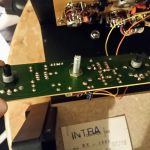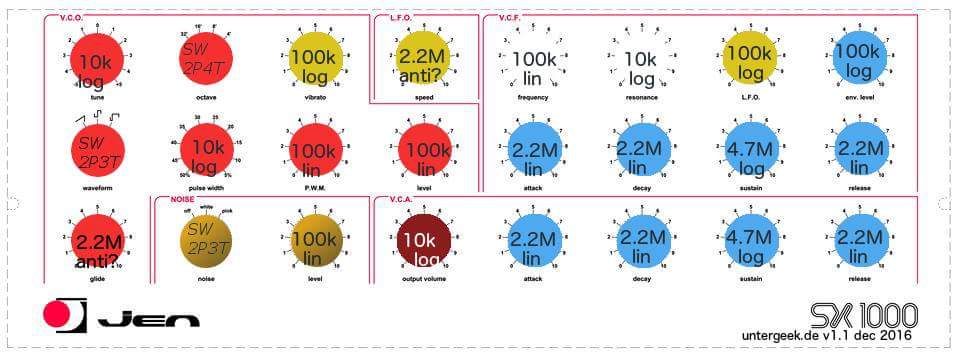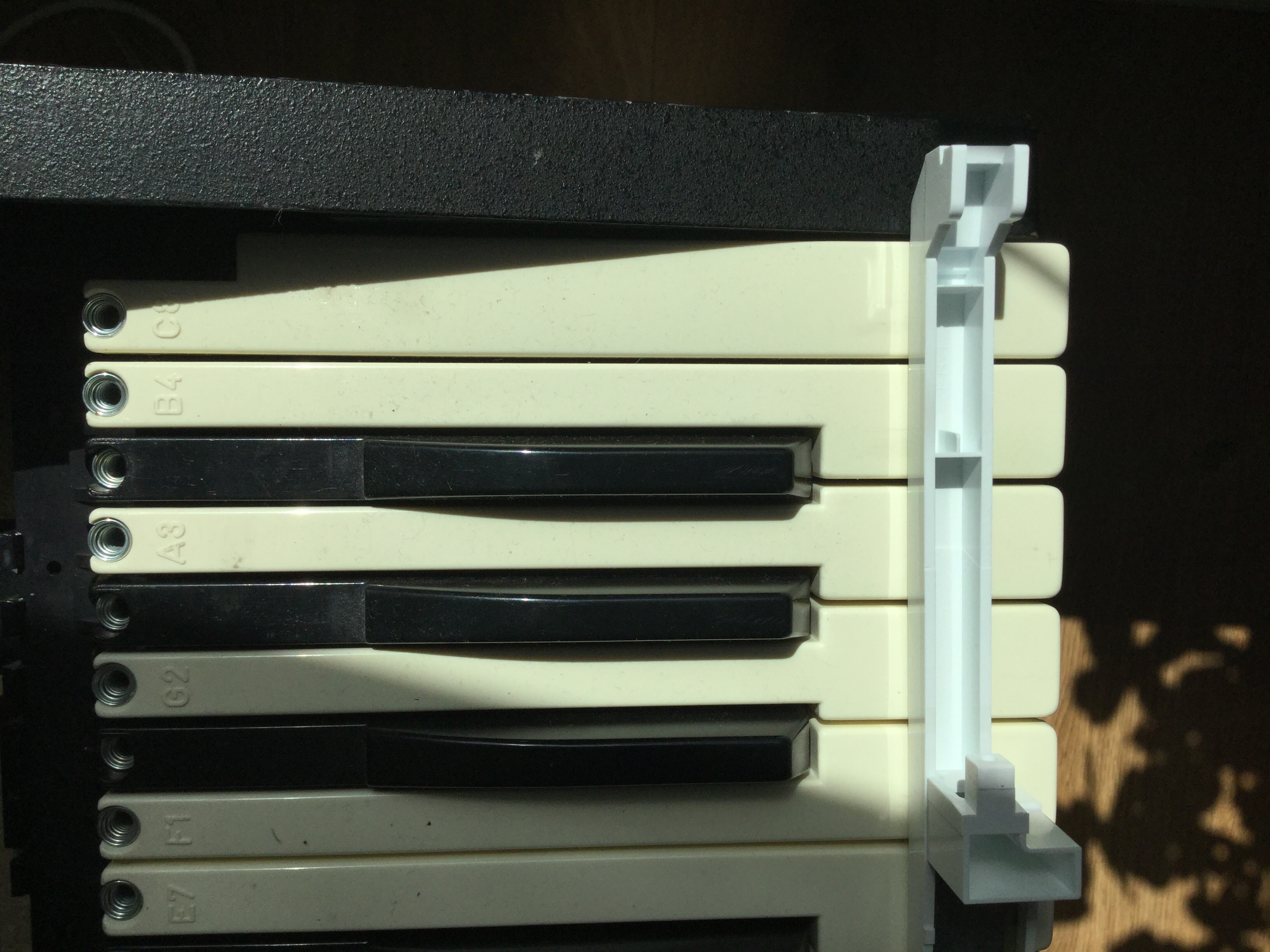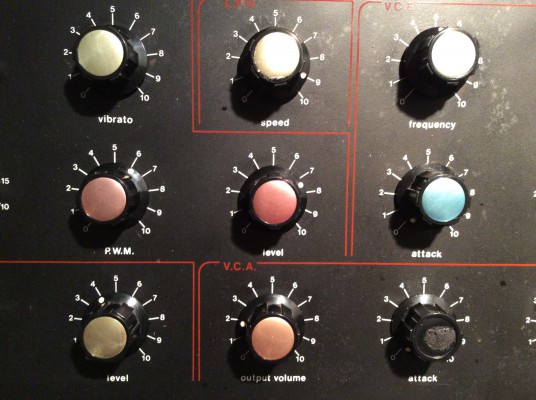Continue readingThis is the first post in a series of small projects for retrofitting my JEN SX-1000 monosynth with a simple and cheap MIDI interface controller. Read about the basic idea here. Today, I am designing and building the micro-controller brain of the Jenny retrofit – if you are capable of basic soldering, it should not take you more than two hours and a couple of very common electronic parts.
Tag Archives: Jen SX-1000
Jenny getting her very own phaser…
…and my sweet Lord, does it make her shine!
Nothing fancy here. After inserting the booster/overdrive in between VCO and filter section, I took another of those lovely Musikding.de kits for a phaser, built it, drilled some holes into Jenny’s housing and fitted it.
 I have been using Jenny as a bass synth recently, and I am quite impressed by the quantities of life and fun this old machine is adding to the mix. She doesn’t do that much in terms of tonal range, but what she does, she does well.
I have been using Jenny as a bass synth recently, and I am quite impressed by the quantities of life and fun this old machine is adding to the mix. She doesn’t do that much in terms of tonal range, but what she does, she does well.
Drilling holes in Jenny’s front
I rediscovered an old trick when drilling metal: use a bit of alcohol, not on the person drilling, but on the surface you want to drill. And don’t go too fast. 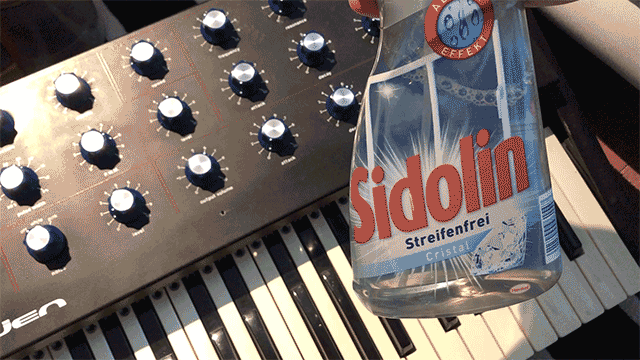
A Pre-Filter Booster Stage for Jenny
Giving my JEN SX-1000 a bit of additional low growl by adding a pre-filter overdrive.
A nice little addition: Insert a booster circuit kit where the coupling capacitor between oscillator and the filter used to be. Come on, you’ll have to take out that damn capacitor anyway. And it sounds really nice, punching through the mix (samples below) – especially in combination with the sub-oscillator mod.
I do admit that you might think that this is a superfluous mod. After all, when you drive this circuit – any circuit – into overdrive and into clipping, the resulting wave form will, gradually, start to resemble a square wave.
But I could do it, so I did it. And I like it. So let’s get started.
MIDIfying Jenny – A Call To Arms
Isn’t it about time my beloved Jenny got her own MIDI interface?
To be sure, microcontroller-based interfaces for the JEN SX-1000 do exist. Apart from the commercial CV/Gate solutions by Kenton, there is Neil Johnson’s keyboard interface design. But even if you can get hold of the PCB – a supplier in the JEN SX-1000 group on Facebook had a batch made – the design has an intimidating parts list, and takes some serious time to build.
Is it possible to do it simpler? Emboldened by my success building a small Arduino-based MIDI controller, I decided to start a midification effort that is
- easy to do (requiring only basic soldering skills, if any)
- easy to get (by using components that you can buy on Amazon if you have to),
- easy to develop (using standard solutions from the Arduino community),
- easy to schedule (because the project is divided up into little steps, each of which is a small afternoon sub-project with instant gratification),
- easy to participate (by contributing own ideas and code for parts of the project).
I will describe the basic layout of the MIDI upgrade kit project here. Each step, i.e. each sub-project, will then be treated in a new post, depending how fast I (or the community) get them done.
Caveat
Nachdem ich gerade billigen und schnellen Erfolg beim Bau eines eigenen MIDI-Controllers hatte und deshalb ersthaft darüber nachdenke, ein größeres Analogsynth-MIDIfizierungs-Projekt mit Jenny anzugehen: eine kleine Erinnerung.

Wie sagt doch ein guter Freund immer:
“Das Schlimmste, was uns passieren kann, ist, dass wir Erfolg haben.”
A love letter to Jenny: Tremolo and Key Tracking Mod
This JEN SX-1000 belongs to Stéphane in France, who wrote to tell me of the three mods he did. I have never seen two of them before – a Tremolo control, and variable filter tracking. Which would make Gordon Reid very, very happy.
So here is Stéphane’s letter:
“Hello, here are some modifications for the Jen synthetone SX1000. Nothing is disconnected. Components are added.”
A new glide pot for Jenny
A bit of TLC for my oldest synthesizer: Jenny is getting a new potentiometer. As the synth’s pots were rather cheap, open types that gather dust, and are 40 years old now, they have become all scratchy and jumpy. As I have mentioned before, I am not the greatest fan of Kontakt spray and similar solvents/cleaners, so I bought replacements. But I never found the time to actually replace them.
This knob is a good place to start: The “glide” potentiometer is in charge of portamento, and it is one of the first things that might make Jenny fail (see Neil Johnson’s site). A faulty glide pot means that the synth will only ever play the same note regardless of which key you press. So I did replace that pot, which is pretty straightforward – you’ll find some pictures in this gallery. (It is a 2.2M linear type BTW.)
- The Glide pot is in the upper left corner of this picture. As you can see it is sitting on a small PCB together with the Noise switch and pot. Remove the knobs and the nuts from the axes of all three, and you can take out the board to replace the potentiometer.
- The pot needs to have a 10mm shaft and a 5mm diameter axis. Cut off the axis at about 10mm – which makes the distance from the end of the shaft to the top of the pot 20mm.
- Pot soldered and screwed to the PCB. Ready to re-insert and re-attach the board into Jenny’s panel.
Overview of potentiometer values
This is an overview of the potentiometer values, some of them are linear, some logarithmic, a few antilog. The most obvious candidates for replacement, apart from the glide pot, would be Frequency (100k) and Resonance (100k) for the filter, and Tune (10k).
Whitening Jenny’s smile: Bleaching old synth keys
Jenny – my old 70s monosynth – is a beauty, and I love her knobby face. Her smile, though, has yellowed over the decades. So to make Jenny even more attractive, I decided to try and bleach the keys with hydrogen peroxide.
TL;DR: Effect has been minimal, so it’s probably not worth it. But it was fun. If you try it, make the Retrobright bleaching gel, don’t use a hydrogen peroxide bath. And have a good UV source.
In School, I used to hate chemistry. Did I mention that I used to hate chemistry? Okay, I did (when successfully reviving Jenny’s keyboard contact springs by cooking them)
So here’s what I did.
Securing Jenny’s power supply
Pretty straightforward, this one: Replace the JEN SX-1000‘s fixed power cable with an IEC socket. (Like weird German words? You’ll love this: In German, this thing is called a “Kaltgerätestecker”, more precisely, a “Kaltgeräte-Steckverbinderbuchse”, which translates to “Cold unit connector socket”. Don’t ask me.)
No problems here apart from cutting a hole for the socket; I used steel drills to mark the corners of the cutout and then cut the steel with my Dremel tool. Lots of metal dust but fast, and it did the job precisely.
A word on Jenny’s power supply: It’s extremely oldschool – a transformer and a diode bridge generating +/-18VDC, two 7812 regulators generating +12V and -12V, and another 7805 regulator generating the +5V supply rail from the 12V. If you would like your JEN to be a bit more eco-friendly I’d advise replacing those regulators by the 2931CT low-dropout type, but apart from that, there’s hardly any reason to look at the power supply – it’s rather solid and possibly not your primary concern if the synth does not work.
Adding a slightly odd sub-oscillator circuit to Jenny
Let’s start with some good news: Jenny‘s here to stay with me, so I can start some serious modding. The single VCO and the filter design make it hard for her to growl credibly, so I tried to make her bark and her bite a bit tougher, using bits and gates from my basement supplies: adding a sub-oscillator, and pre-filter overdrive.
Subjenny
The sub-oscillator is simple and has been done by many great modders: You add a divider circuit to produce a one-octave (or two-octave) square-wave sub-oscillator and feed the signal to the unused “Off” terminal of the noise selector switch (over a 100k resistor so that the sub-osc signal is not overly loud). So now when the noise generators are switched off you can use the noise dial to add some deepness.
